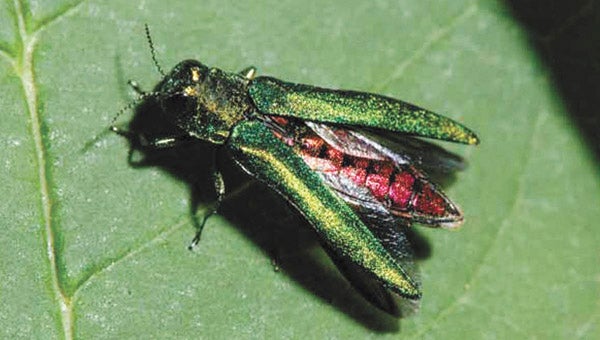Don’t move that firewood
Published 11:15 am Sunday, May 29, 2011
It’s Emerald Ash Borer Awareness Week throughout Minnesota, and this weekend may be the most important time for people to know.
As Memorial Day weekend approaches, many will be heading on vacations. And one of the biggest reasons for the presence of emerald ash borers in Minnesota is transported firewood. The insects, which infest all three types of ash tree species in Minnesota, can easily be transported by firewood. That’s why the Minnesota Department of Agriculture declared it illegal to transport unapproved firewood through counties where the green beetle has been found. Those counties include Hennepin, Ramsey and Houston.
However, the MDA has been treating its own firewood, which goes through a heat process and also doesn’t allow the beetle to return to the firewood.
Although many people may not think transporting firewood is a big deal, it has caused the insect to spread to other areas. The problem is awareness, said Val Cervenka, Department of Natural Resources forest health program coordinator.
“It takes time for that message to sink in,” she said about not transporting firewood.
Gov. Mark Dayton proclaimed the week of May 23 through 28 Emerald Ash Borer Awareness Week to do just that — raise awareness.
Furthermore, the MDA is heading the way in emerald ash borer eradication and prevention and has taken several steps toward doing that.
According to Liz Erickson, MDA communications coordinator, ash trees are often being removed from places in the Twin Cities to limit the beetles’ rate of spread.
By removing some trees, the MDA has segregated some tree populations so the beetle can’t spread.
Another measure, which was started in Houston County last spring, will also be used in Hennepin and Ramsey counties. The MDA will release small, Asian, stingless wasps that eat the beetles’ larvae. Although the wasps do have stingers, they only sting emerald ash borer eggs and larvae — never humans or other animals.
Cervenka and Erickson both said the wasps have been tested in labs and won’t cause invasive-species problems.
Since the beetles were discovered in Minnesota in 2009, they have only been found in the three counties mentioned. But that’s not stopping the state from staying vigilant. In unaffected counties, officials are still hanging the easy-to-spot purple traps. The traps aren’t proficient at catching the beetle, but they are another way for officials to gauge the spread of the bug.
“We know it’s going to keep going farther and farther,” Cervenka said.
For now, the only solace in the situation may be that populations are not getting any denser as they spread to other areas. The problem will continue to be confusing, however, as trees don’t show signs of infestation for at least three years after the beetles enter them. No trees in Minnesota have died from infestations thus far. Officials suspect the beetle was in Minnesota several years before it was discovered in 2009.






